Medical Treatment
and Facilities - medics, the USS Sanctury, 27th Surg and 91st EVAC
Medical treatment began on the battlefield with combat medics and other
soldiers doing what they
could to save lives. In the midst of horrendous combat they applied
the four lifesaving steps:
(a) Stop the bleeding.
(c) Protect the wound. |
(b) Clear and maintain airway.
(d) Prevent or treat for shock. |
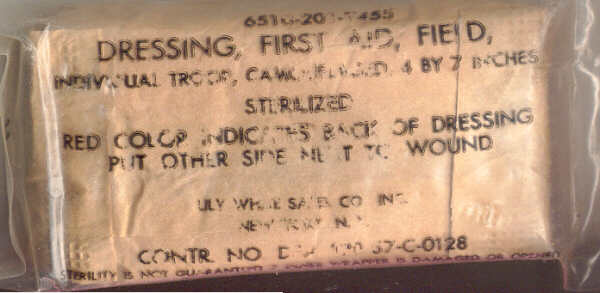
Each soldier carried at least one of these: Dressing, First Aid, Field,
Individual troop, Camouflaged,
4 by 7 inches, Sterilized. The slightly wounded were treated in the
field or sent back to the battalion
aid station. More seriously wounded soldiers were treated as
best as possible and then evacuated
by emergency helicopter flights for life saving treatment. Link
here for a tribute
to "Doc"- the medic.
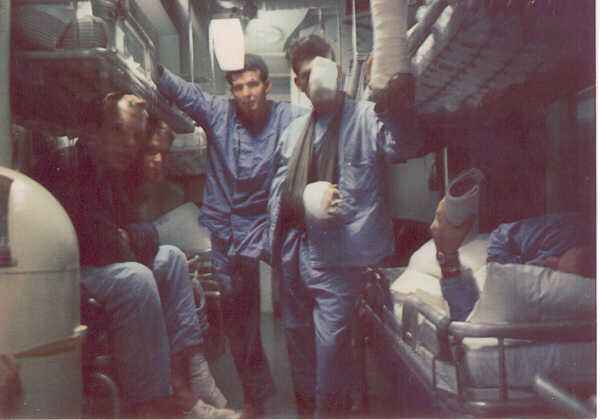
These soldiers from the 1st Battalion 6th Infantry, wounded during
the Battle of Lo Giang in TET '68
just south of Da Nang, were treated on the naval hospital ship, the
USS Sanctuary. Photo by Don
Kaiser (1-6 Inf 1967-68).

The USS Sanctuary was 522 ft long, 71 ft wide, and drew 30 feet of
water. In accordance with the
Hague and Geneva Conventions, the floating hospital carried no armament
In WWII, the USS
Sanctuary had served as an ambulance ship that carried the wounded
and sick to rear area hospitals.
Taken out of mothballs in 1967, the ship was equipped with a helicopter
landing area deck, three
X-ray machines, four operating rooms, and equipment for 20 wards. With
a crew of 568 (including
316 medical personnel), the ship had room for 796 patients. The
ship lay off the coast of Vietnam
for 50 days at a time, close to Da Nang, Chu Lai, and elsewhere, depending
upon the area of fighting.
For additional information about the ship, and some extraordinary photos,
the USS Sanctuary
web site.
Official US Navy photo.
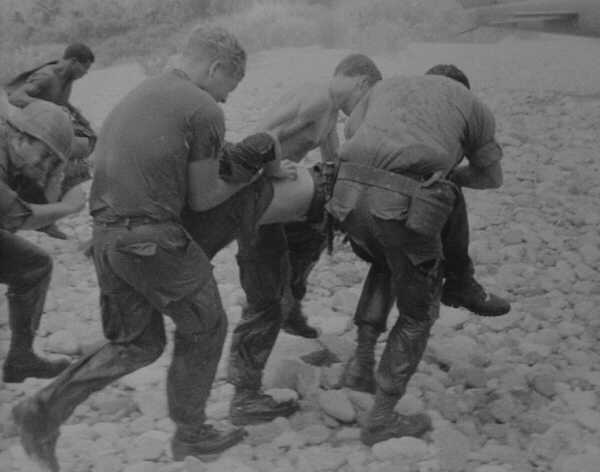 |
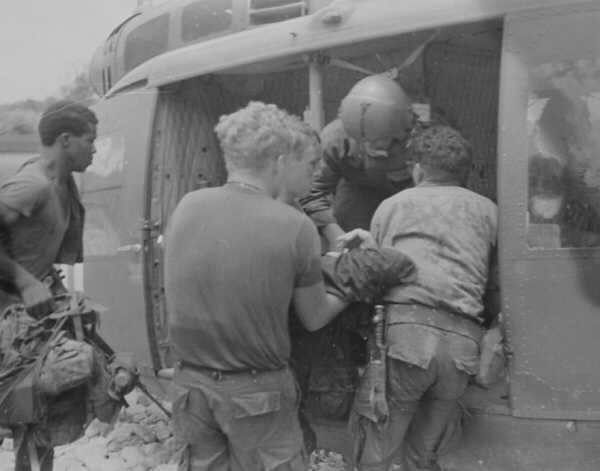 |
Soldiers from Co. C, 1st Battalion 6th Infantry carried a wounded man toward
a "dust off" helicopter
on 9 July 1969 during an operation in the "rocket pocket" west of Fire
Support Base "Fat City."
US Army photos SC 651570 and SC 651571 from the National Archives II,
College Park, MD.
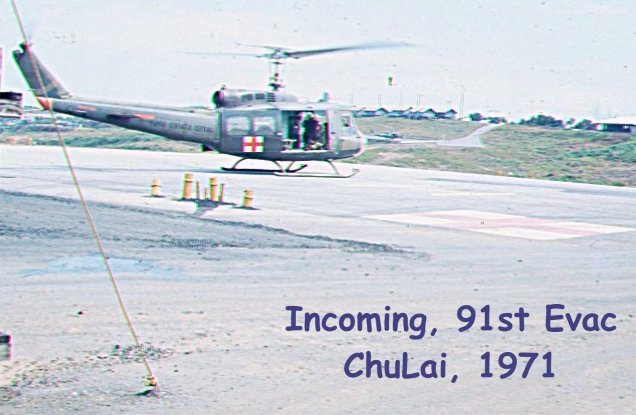
First stop for the Medivac "dust off" flight after picking up the wounded
- the landing pad at the 91st
Evacuation Hospital in Chu Lai on a rocky bluff overlooking the South
China Sea. The 91st EVAC
had moved to Chu Lai in July, 1969, and had taken over the facilities
previously used by the 312th
Evacuation Hospital. The commanding officer of the 91st
EVAC in 1970 (Colonel Keawyn Nehoa)
said the facility was "the most active hospital in Vietnam with the
greatest turnover of patients."
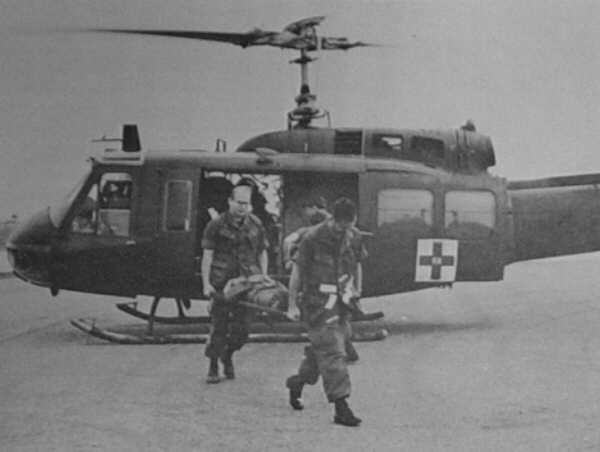
A medivac ride to the rear was part of the Vietnam experience for far
too many soldiers. Over
400 infantrymen in the 1st Battalion 6th Infantry took that trip in
1970. This is a significant number,
as the field operating strength of the unit was about 575. For
many it was their last ride to anywhere.
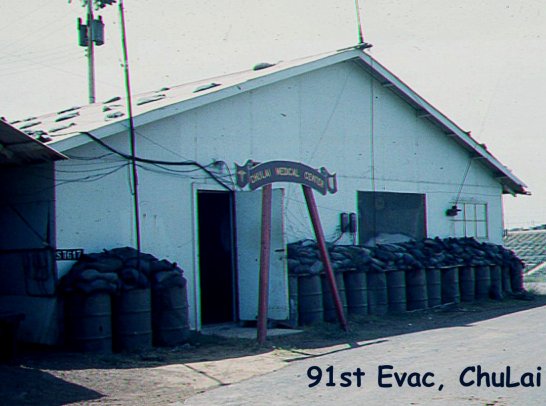
The wounded were carried or walked on their own through these doors
into R&E triage.
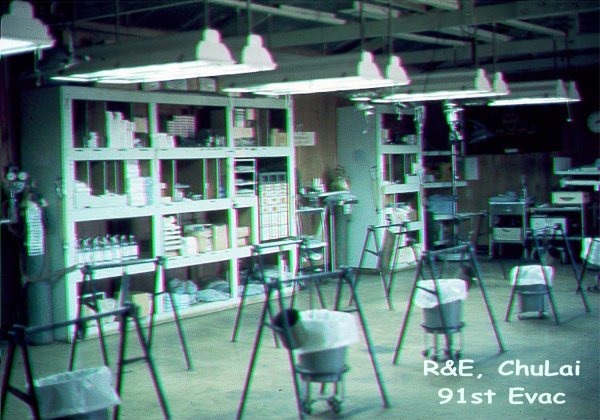
Supplies were stocked so they were available when casualties were brought
in from the landing pad.
Wounded soldiers on stretchers were placed on the sawhorse shaped supports.
Everything was within
reach, and everything was stocked the same--that way the nurses did
not have to look for what they
needed to render aid to the wounded. Many of us owe the nurses----they
treated the wounded and
comforted the dying. They were soldiers who suffered and made
sacrifices.
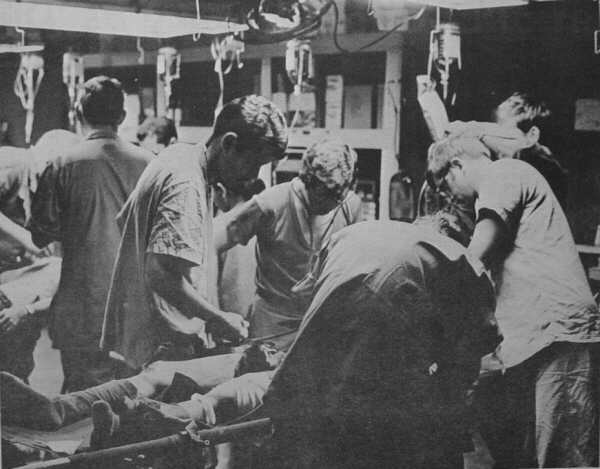
The 91st EVAC was staffed with 113 medical officers and 223 enlisted
personnel. Capable of
treating all acute injuries, including brain surgery as well as heart
and eye surgery, the hospital treated
an average of 800 patients per month in 1970-71. Some patients
were transferred on to the 249th
General Hospital near Tachikawa AFB in Japan for additional treatment
or eventual evacuation to
hospitals in the USA.
Color photos provided by Chris Banigan (CBANIGAN@aol.com), an Army Nurse
who served
at both the 27th Surgical Hospital and the 91st Evacuation Hospital
at Chu Lai during 1970 and
1971. Visit her web
site for a view of the war through the eyes of an Army Nurse.
Black and white
photos by SP4 Guy Winkler from a photo essay entitled "'Dust Offs'
and the road to recovery"
in a 1970 issue of the Southern Cross (the Americal Division
newspaper).
Click
here for another 91st EVAC nurse web site (from Anna Marie, July
70 - July 71)
Select additional photos from Photo Index at left, or link to the 1st
Bn 6th Inf Home
Page


